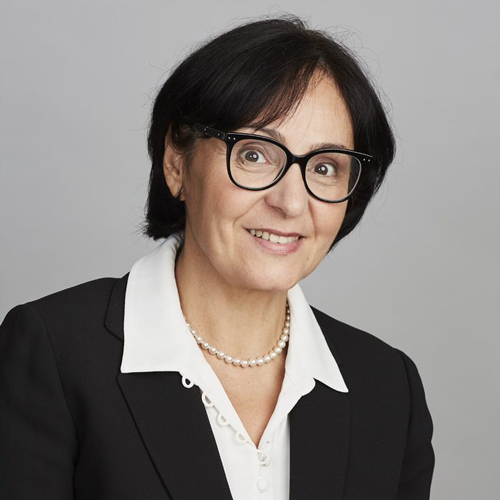
MARIANA CIRCIUMARU
Managing Director, Head of U.S. Construction at BentallGreenOak
The pandemic undoubtedly served as a catalyst for technology in the world of real estate and construction. Is it here to stay? Mariana Circiumaru, managing director and head of US construction for BentallGreenOak, shares her perspective as a property owner and developer navigating the balance between tech and the human touch.
How did the pandemic change the way you and your teams use technology on projects?
The pandemic was a stress test for project management. In the same way a doctor makes you exercise to get your blood flowing to find any defects in your cardiovascular system, the pandemic prompted us to look at our processes. For example, we tended to have decentralized information across different emails and servers. Cloud-based technologies existed but we weren’t using those to maximum capacity. The pandemic revealed that and helped us look at those technologies right away to better collaborate, communicate, and keep projects going.
What kind of technology are you and your partners using on projects?
We are landlords, so building operations is most important to us. Energy efficiency tools are big. Construction project tools come secondarily, and we rely on the technologies of our contractors to help solve construction challenges. A lot of products came to our attention during the pandemic. We investigated many new technologies and were able to pilot some of those on our sites.
This testing proved that not everything coming out would solve all of our problems, but some are very promising for specific challenges, like energy efficiencies, cloud storage of drawings, on-time information like dashboards, or working with AI. But with all of this research and experimentation, we have to take economics into consideration—what’s the return on investment? Is this a must-have or a nice-to-have? That’s what really differentiates one new technology from the next.
Structure Tone recently used OpenSpace and drones on your Newport Tower project in New Jersey. How did it help your team?
During the pandemic, it was instrumental. Being able to share progress without traveling through the site was critical. Structure Tone’s investment in OpenSpace was great. The Newport Tower project was our first time using it, and now we’re considering getting it ourselves for our ground-up projects. Getting those virtual walkthroughs helped us share that progress back with our portfolio managers and investors and give them a sense of reassurance that their money was being put to work. Going forward, tools like OpenSpace will continue to be very useful, not only to reduce the need for traveling, but also in saving the layers of history of each stage of the project.
We’re also using drones, primarily for marketing a site after completion. We also use drones for acquisition projects to present to investors and collect due diligence about the location. That bird’s eye view gives you a better understanding than a static Google map and brings the site to life.
What do you see next for virtual collaboration tools in our industry?
Using new technologies comes with a risk—and developers don’t have that in their DNA. But it’s becoming an imperative. My prediction is that we will naturally move toward more and more technology as Baby Boomers retire. We will need to improve productivity in new ways and to attract new
generations. Our industry is not seen as high-tech—this progress will be a force majeure in order to survive.
But it needs to be a hybrid with in-person collaboration. Technology makes us feel like we are connected, but we are actually disconnected from the human component. That human interaction cannot be replaced, and we need to make sure we’re finding ways to maintain that while taking advantage of the benefits created by these technologies.
